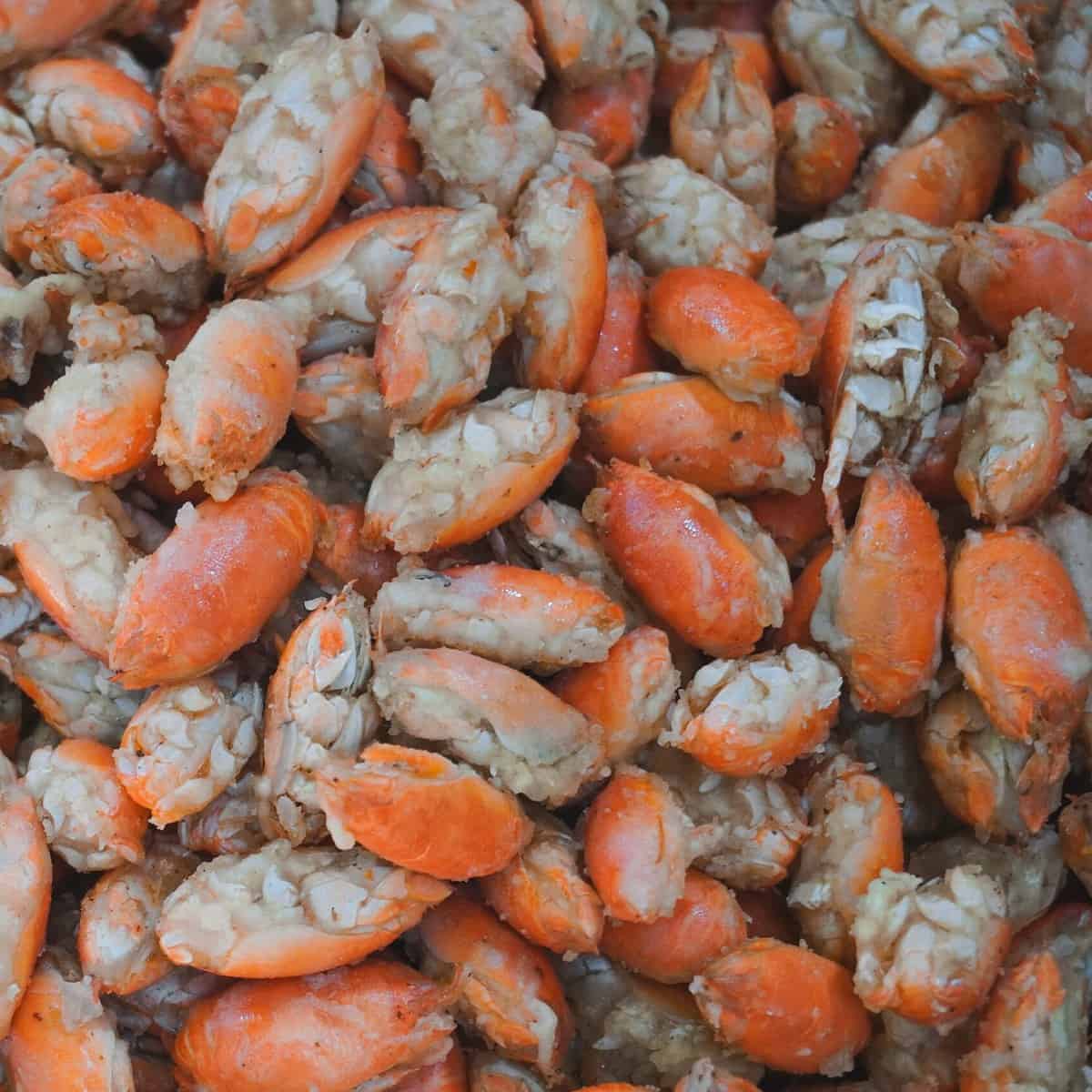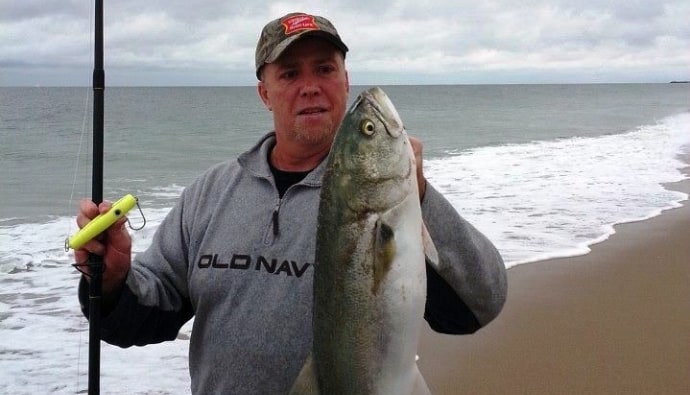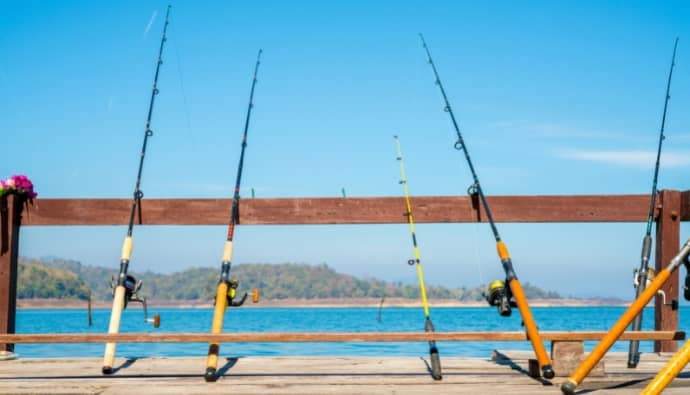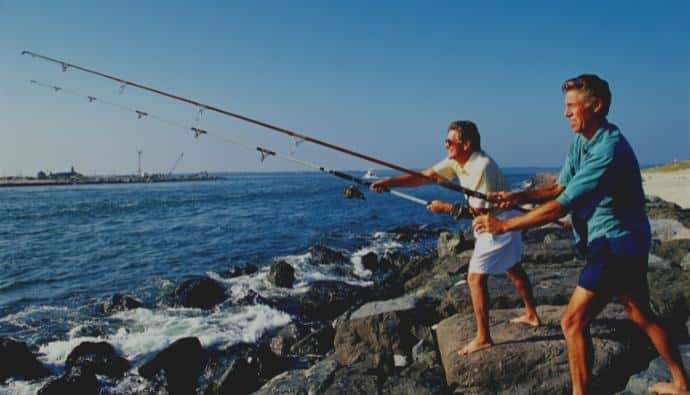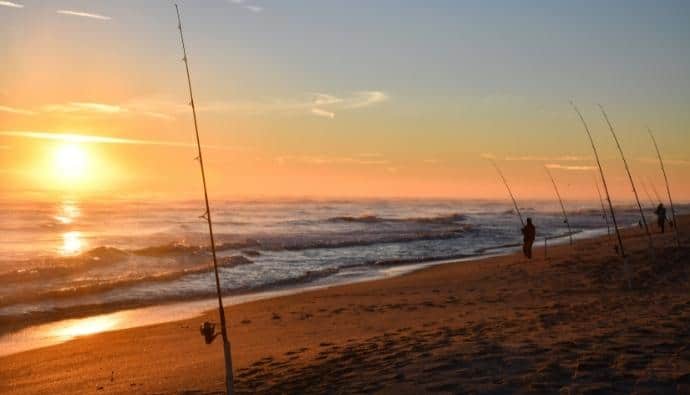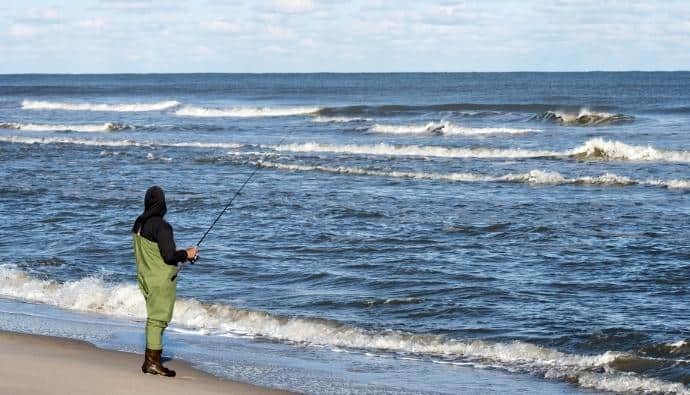If you frequent the coast, you’ve probably run into anglers with their toes in the sand, enjoying the sun, with a rod by their side, waiting for the next bite. These are surf anglers and fishermen who make a relaxing beach day a little more exciting with the possibility of a catch.
The following is a guest post from Cast & Spear reader, Steven!
What is Beach Fishing?
More commonly referred to as surf fishing is a subsection of saltwater angling that involves fishing from the shoreline of a beach or, as the name suggests, casting from the surf.
It has become a very popular recreational activity because it’s accessible to a wide array of anglers as there is no need for an expensive boat. All you need is your fishing gear and a beach.
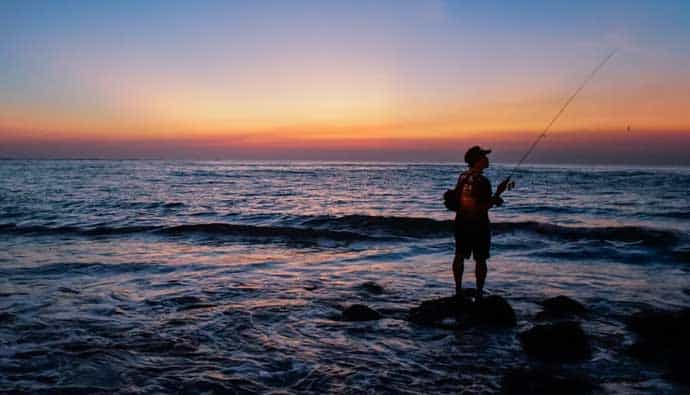
There are a few techniques specific to surfcasting, as the main goal of the sport is to cast your bait as far as possible to make sure you can target high numbers of fish. Many popular species can be caught from the shoreline, including flounder, albacore tuna, bluefish, redfish, and many more.
Why It’s Popular
While the majority of surf fishing anglers choose to fish while the sun is out, this is also a popular nighttime activity. If you head out to the beach after dark, you might see anglers equipped with flashlights and headlamps, attempting to follow the nocturnal feeding habits of the fish species they want to target.
Beach Fishing Tips and Tricks
Like starting any new sport, there’s a learning process that you must go through in order to achieve success. A little research can go a long way. We’ve put together some of our favorite tips and tricks for new surf anglers to ensure the best chances at a catch.
Use the Right Knots
Though you may not realize it, knots are one of the most critical connections between you and your potential catch. If you’ve been relying on the same knot for years, it might be time to take a second look and try something new to avoid losing fish and expensive lures. Here are some great knots for surf fishing:
- Uni Knot: Super versatile and simply structured, the uni knot is a popular choice among anglers thanks to its easy setup and usability. There are many variations of this knot that can be used for a variety of purposes, including attaching the line to leaders and connecting lures and terminal tackle.
- Dropper Loop: This isn’t the easiest to tie, but the dropper loop is a reliable knot that is worth the learning process. It’s a great pick for creating bottom fishing rigs.
- Palomar Knot: This knot is very easy to tie and exceptionally strong. It’s a great option because it works well with both monofilament and braided lines
Always Clean Your Gear Afterwards
Saltwater and metal don’t mix. The combination of salt, water, and oxygen cause corrosion quickly, leaving untreated metal angling equipment weak and damaged after only a few uses in the ocean. If you want to keep your gear in good shape, it’s very important to have a set cleaning routine after each use in saltwater.

Many saltwater rods and reels are made with special corrosion-resistant materials, but even they should get periodic maintenance. One tip is to keep a bucket of fresh water near your fishing spot. You can use this to dunk your reels and lures throughout the day to prevent excessive salt build-up.
After your beach day, thoroughly wash all-metal gear with warm water and gentle soap (Dr. Bronner’s works well). Be sure to take items apart if needed to inspect for salt buildup in hard-to-reach spots. Rinse with clean water and dry thoroughly before storing it.
Always Use the Proper Line While Beach Fishing
The most commonly used lines for saltwater angling are monofilament, braided, and fluorocarbon lines. Anglers usually prefer one over the other for a couple of different reasons.
- Monofilament lines are a single line of material that is fairly stretchy and flexible. They’re popular as they are usually very inexpensive, great for casting right out of the spool, and they are easy to tie knots with. However, because of their flexibility, they can hold more memory.
- Braided lines are a very popular choice because they are super strong and reliable. While they’re not the easiest lines to tie knots with and are a little more pricey, the design offers a little stretch. This keeps the line sensitive and durable.
- Fluorocarbon line is widely used because it is very durable and can withstand a ton of beating from underwater rocks, reefs, etc. Another major draw is the material, which is refractive, making it look invisible to fish.
Use Data to Learn More About Swells
While there is some element of luck when it comes to surf angling, you can greatly increase your chances of success by doing some research on the nature of the ocean. Being in the right place at the right time can result in lots of fish just waiting to be caught.
Waves and swells determine the action of the life below. Some species will head closer to shore when swells are heavy, while others will move farther out. Strong swells will color the water darker, giving the fish more cover, which means many tend to head closer to shore to feed.
You’ll want to head to the beach at a time when the catches are likely to be closer to shore, which means also monitoring the tides. Because fish use tide power to travel and feed, fish are most active when the tide is strong. Their natural prey is often unexposed with a strong tide, so it’s a good time to strike.

Don’t Use Half-Dead Bait
If you’ll be opting for live bait rather than lures, you’ll have to take an extra step of care to get the best chance at success. Keeping your bait healthy and fresh is super important to attract big fish. The scent, natural look, and motion of live bait make it super appealing, but only if it’s healthy.
Many anglers opt to use lures because it’s a pain to keep bait healthy, but it’s not too hard with a couple of preliminary steps. The most important part is to monitor the balance of water temperature and oxygen.
You should keep your bait at a temperature range that is similar to the water you’ll be fishing in. On days when the temperatures are elevated, and the oxygen levels are lower, add a frozen water bottle to your bait container. Waterflow is also an important part- add some current to your container. Not enough to exhaust the bait, but enough to flush impurities from the tank.
Best Parts About Beach Fishing
If you’re still not convinced surf fishing might be your thing, you’re wrong (respectfully). There’s a reason it’s so popular, for the following reasons and many more.
It’s a Challenge
Unlike some subsets of angling, where you can just throw your line in and bring up a catch with ease, surf fishing is definitely more of a fun challenge. Investing time and energy into learning the best practices can really help, and in the end, the rewards will be so much better. A little extra work never hurt anybody.
Wide Array of Fish Species
Don’t limit yourself to the fish species you’re used to hunting for. Surf angling opens up a wide world of opportunities to catch fish types you’ve never caught before.
It’s Scenic
Everyone likes hanging out on a beach, so why not add a little extra interest with surf angling? There’s little that can beat the feeling of the ocean wind and sand under your toes, and a catch at the end of the day can make it all the better.
Now, Go Fish!
Now that you’re equipped with some tips and tricks, all you need is your gear, and you’re all set for a successful day in the surf. Hopefully, this article gave you some insight into the world of surf angling. Make sure you follow your local and state fishing regulations…I don’t want to see you get a ticket anywhere 🙂
Happy fishing!




 Facebook
Facebook YouTube
YouTube